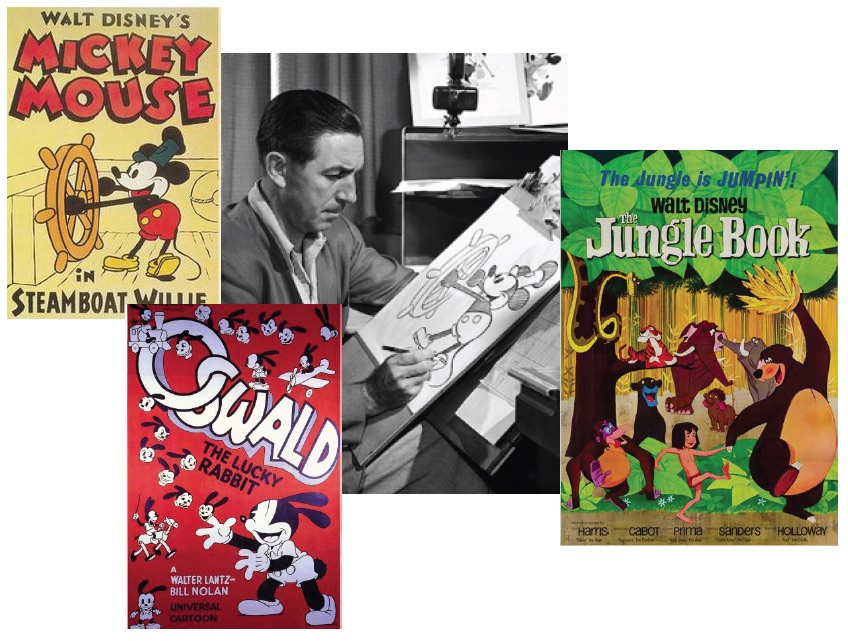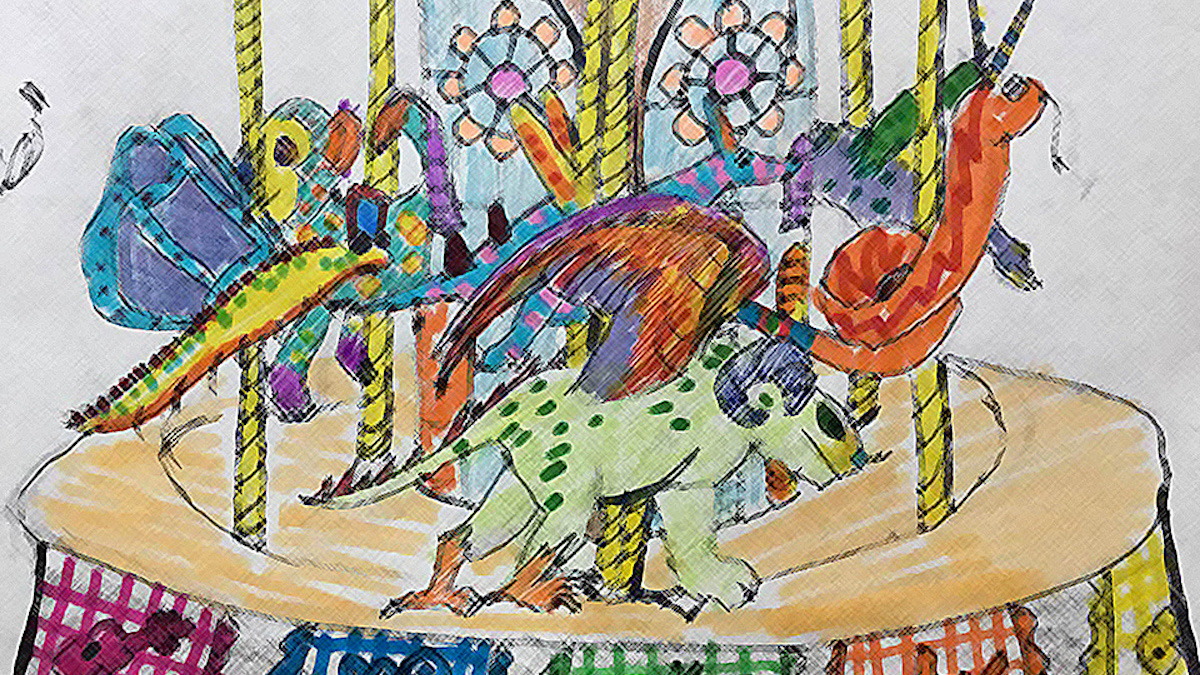
The Artist: Walt Disney
“Always remember that this whole thing was started by a mouse.”
This is one the most famous quotes spoken on the importance of imagination, and is often attached to biographies, written on promotional material, and quoted by historians, who try to put into perspective the overwhelmingly enormous entertainment entity Walt Disney helped create.
Before the Disney Parks spread worldwide, before the massive mergers with Pixar, Marvel, Star Wars, and everything else, before the growth, the change, the “evolution,” and new faces in charge, there was simply an artist named Walt Disney who liked to dream big.
Disney is known as the founder of The Walt Disney Company with 22 Academy Awards to his name, a pioneer in the animation industry, and the entrepreneur behind the creation of the most prolific theme park chain in the world. He grew up wanting to be a cartoonist.
He was born in Chicago in 1901. He began drawing at a very young age, drawing everything from animals to trains. His training as a youth ranged from taking a correspondence cartoon course, attending weekend classes in Kansas City, and later night courses at Chicago Academy of Arts. He drew cartoons for his high school paper, and later had some cartoons published in Stars and Stripes, as well as commercial illustrations for advertising and theater programs.
In 1920, he and fellow artist Ub Iwerks, who had both been laid off at a company they were working for, started their own animation business, which was not very successful. They later worked at a commercial animation company, and Disney began learning more about the filmmaking process behind animation. He worked hard to make a go of it, but his success did not come until 1923 when he moved to Hollywood where he and his brother, Roy, started Disney Brothers Studio, the predecessor to the Walt Disney Company. In the 1920s, he made a series of Alice Comedies featuring a live-action girl on an animated background. He also created the character Oswald the Lucky Rabbit for Universal Pictures. Universal owned the intellectual rights to Oswald at the time, but Disney broke from working with them instead of taking reductions in pay.
In 1928, he developed a character he called “Mortimer,” inspired by a pet mouse he adopted working at another studio. Iwerks helped make the character easier to animate. Disney’s wife, Lillian, said the character’s name was to “pompous,” so Mortimer became the more likable, Mickey Mouse. He made a test screening of a short “Plane Crazy,” but Mickey’s debut to the world was in the first post-produced sound cartoon, Steamboat Willie, in which Disney provided Mickey’s voice.

Over the next four decades, Disney had his hand in everything. He helped usher in the Golden Age of animation, including creating the feature-length cartoon (Snow White and Seven Dwarfs), helping to develop the multiplane camera, and creating World War II training films. He created live-action films, television, music, and in 1955, he opened Disneyland in Anaheim. In 1965, he announced plans for his next park, Disney World in Florida, along with the Experimental Prototype Community of Tomorrow (EPCOT), but never go to see them finished. Disney died of lung cancer in 1966, not long after his 65th birthday.
In 2016, the Magic Kingdom at Walt Disney World ranked the most visited theme park in the world (around 19.3 million visitors that year), and according to some auction sites, his signature alone will sell for at least $1,000 to $2,000, and $10,000 or more if it includes a drawing.
Disney may have said it all “started with a mouse,” but really, it all started with the mind of Walt Disney. Long after his death, it is still incredible to know that a little pen-and-ink mouse who isn’t even 100-years-old yet, helped to spawn so many new ideas… and he is still doing it today.
Those who visit the Disney Parks today will find one quote by him on the inside wall if Epcot Center’s American Adventure that reminds visitors what the most important element of imagination is, as well as where it starts:
“Our greatest natural resource is the minds of our children.”

The Project: Create Your Dream Attraction
With summer coming to a close, here’s an easy, fun and straightforward project that takes little explanation, but will demand some thought and really big dreams.
Another one of Disney’s most “quotable” comments was when he was sharing his personal philosophy on how there is always room to grow and learn.
“Disneyland will never be completed,” he said. “It will continue to grow as long as there is imagination left in the world.”
This task of keeping the Disney Parks “alive” and new is the job of many people, including the Imagineer.
The term “Imagineering” (a mashup of imagination and engineering) is now a trademark of the Walt Disney Company, but it may have been around longer. Walt Disney Imagineering opened in 1955, and according to the Imagineering Field Guide to the Magic Kingdom, encompasses at least 140 different jobs such as illustrators, architects, engineers, lighting designers, show writers, graphic designers, and more.
For this project, we’re going to concentrate more on the “imagination” aspect of this profession and create our own theme park attraction.
All you’ll need for this project is paper, pencils, colored pencils or markers, and most importantly, ideas.
Everyone who loves Disney, Universal, or even the hometown amusement park, has probably thought about what they would like to see or build there, so now is your chance to try your hand at Imagineering, and come up with an idea for an attraction. You’ve likely wandered through a park or let your mind wander in an overly-long queue and thought of what they would add to the experience of a day.
This is the first step: think about what you love in a theme park. Traditional or classic fair rides, movie-based dark rides, thrill rides or rollercoasters, restaurants, walkthrough attractions, parade floats, or even entire lands.
I love the immersive experience of dark rides and walkthroughs, but I wanted to create new variants of classic boardwalk rides that haven’t been done before, basing them on some of the more recent Pixar movies I think have some visually beautiful potential to add to a park’s “skyline.”
It doesn’t have to be based on anything that is a currently associated with a park. Disney and Universal don’t own all the good ideas… yet.
Is there a favorite story, character, travel destination, or video game you want to experience as an attraction?
My teenage daughter said she wishes Bendy Land, from Bendy and the Ink Machine, was real, and created a concept for it, while my younger daughter wants to see a Ninjago “Ride of Doom.”
Really, if you can think it, get in on paper.
Easy enough?
Yes and no. There should be a couple things your idea includes.
- Give it a catchy title, so we know what the theme is.
- Think about whether or not is it could actually work. A Monty Python and the Holy Grail catapult would be fun, but where would people land?
- What would make something people want to visit, see, or ride? Give is some attractive details.
- Have fun. That’s the whole point of theme parks.
You don’t have to get too technical or detailed. If you look at some of the old concept designs for attractions, they are no more than pencil on paper. Others may be more like blueprints, and some just a sketch of a character or ride vehicle.
Some of these ideas blossomed into full-scale attractions, others became parts of other ideas, and some remained nothing more than a peek inside the mind of a particular imagineer. One Disney park designer, John Ramirez, even recently came up with some “what ifs” for Studio Ghibli inspired attractions.

The important thing is that idea made it onto paper instead of staying trapped inside someone’s head where no one else would ever know about it.
That’s the important part. Whatever you design, whatever you think of, as long as it is on paper, it has a future—even if that future is inspiration for others.
Who knows? Maybe your own idea will live, grow, and inspire others for years to come. Disney himself was certain of one thing, saying dreams can come true for those who have the courage to pursue them.
“Imagination has no age,” he said, “dreams are forever.”
Need further inspiration? Here’s a promo of Walt promoting the very last attraction Disney oversaw the construction on before he died: Pirates of the Caribbean:


